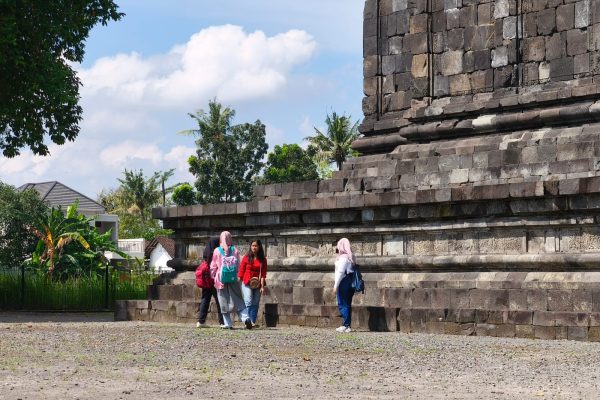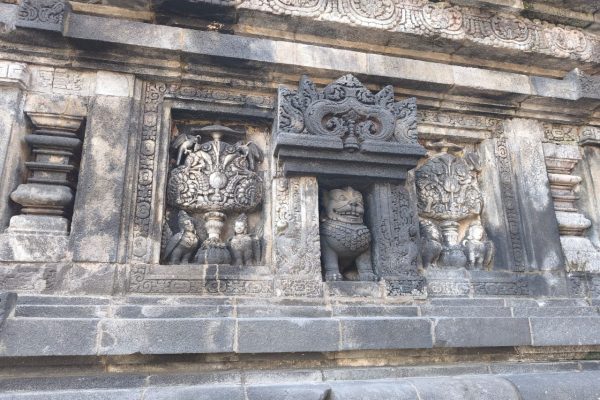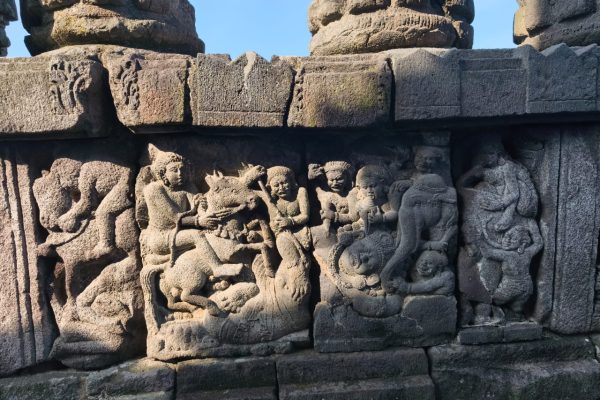SLEMAN, YOGYAKARTA – JULY 29, 2025 – In an innovative learning initiative, a group of students (Awanda Nurvi Adifa (22/497410/BI/11018), Nisrina Nibros Hasibuan (22/498667/BI/11048), and Safina Suci Samara (22/498711/BI/11049)) from the UGM Faculty of Biology has conducted a field study at the Prambanan Temple complex. The activity, part of the Research scheme of the Merdeka Belajar Kampus Merdeka (MBKM) program, focuses on identifying and analyzing the diverse fauna carved on the reliefs of the 9th-century temple.
The visit aims to reconstruct a picture of past biodiversity as depicted on the temple reliefs. Using the bio-iconography method, the students are meticulously documenting, identifying, and analyzing every animal relief found, from mammals and birds to reptiles and insects. The collected data will then be used to build a historical database of the fauna from that period.
This research activity not only has high academic value but also directly supports the achievement of the Sustainable Development Goals (SDGs).
Specifically, this initiative is highly relevant to SDG 15: Life on Land. By understanding the types of animals that once lived and were recorded in this cultural heritage, the students can provide historical comparative data. This data is crucial for understanding biodiversity changes over centuries, measuring the rate of species loss, and can ultimately form the basis for formulating more effective wildlife conservation strategies today.
Furthermore, this program is also a tangible implementation of SDG 4: Quality Education. The MBKM learning model, which takes students directly to the research object, provides a deep, contextual learning experience that goes beyond the classroom walls.
Zuliyati Rohmah, S.Si., M.Si., Ph.D. Eng., the supervising field lecturer, stated that Prambanan Temple is a priceless natural history laboratory. “The reliefs on the temple are not merely artistic decorations, but a visual archive of past ecosystems. Through the eyes of a biologist, these reliefs tell a story about the richness of fauna in their time. This is a bridge between biology, archaeology, and history that provides students with a holistic understanding,” she said.
One of the participating students, Awanda, expressed her enthusiasm. “This experience has opened our eyes to the fact that conservation is not just about the future, but also about learning from the past. Seeing the detailed carvings of langurs, deer, and various
birds on the stone made us wonder, are they all still around us today? This motivates us to be more concerned about wildlife preservation,” she said.
birds on the stone made us wonder, are they all still around us today? This motivates us to be more concerned about wildlife preservation,” she said.
The results of this research are expected to be published in a scientific journal and become an important reference for researchers, archaeologists, and conservation activists in understanding the ancient Javanese ecological landscape.




